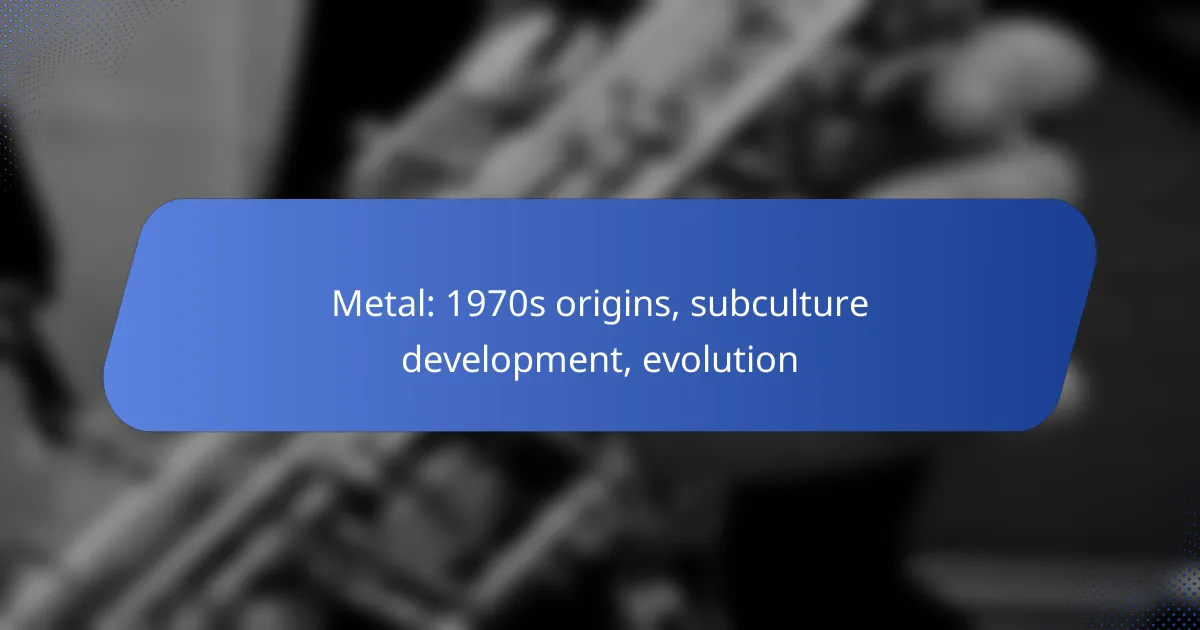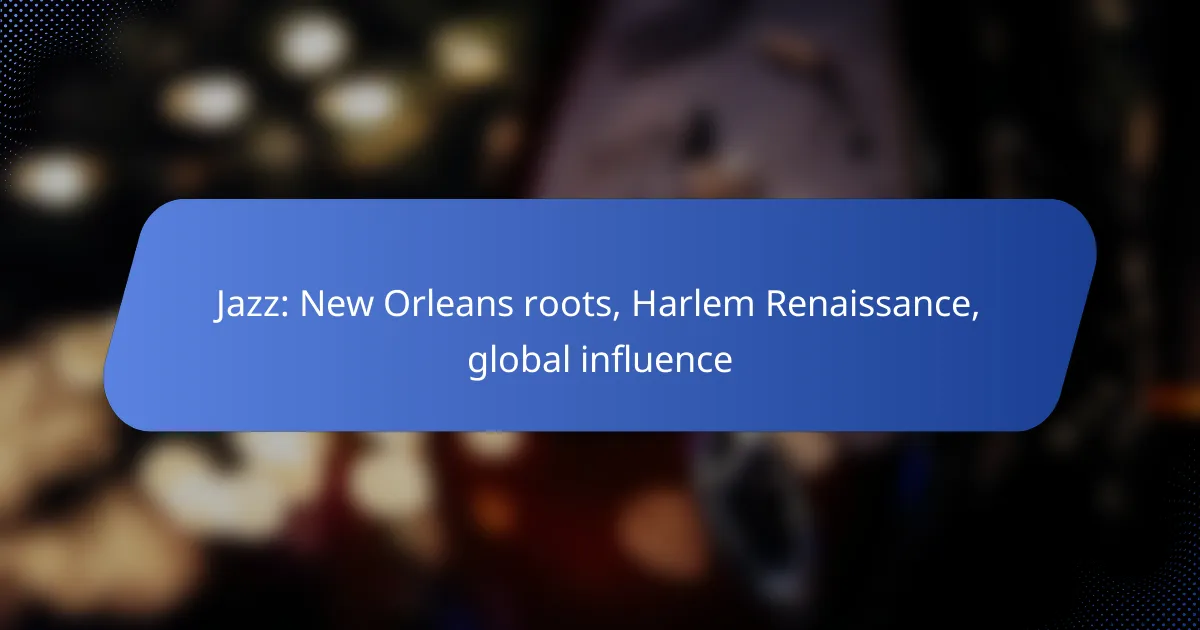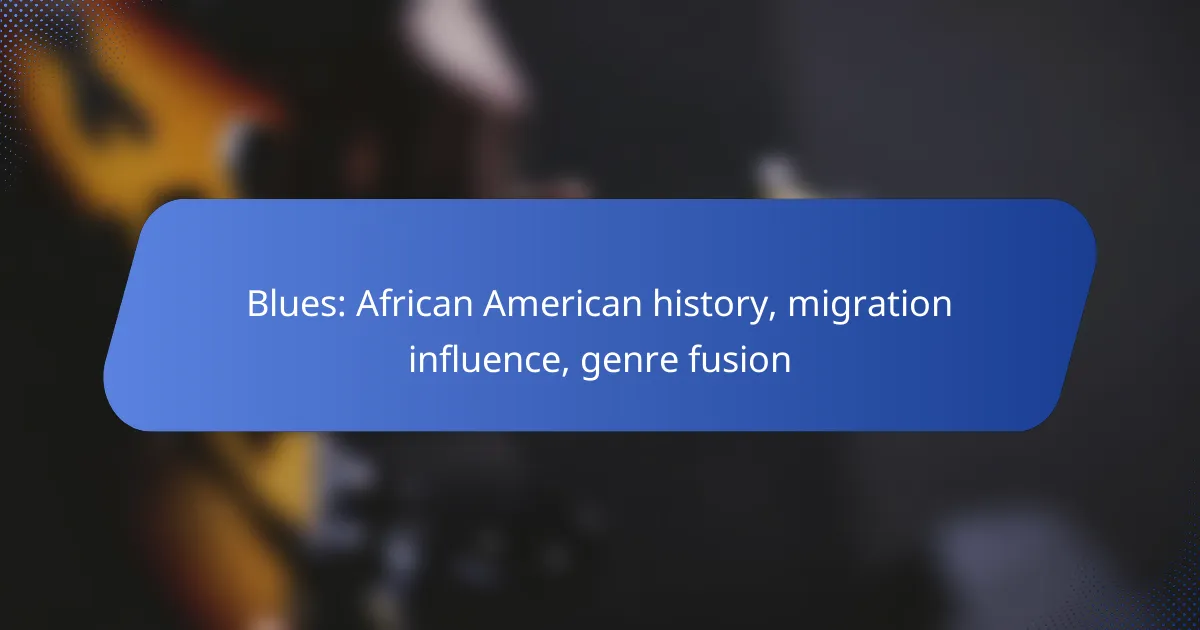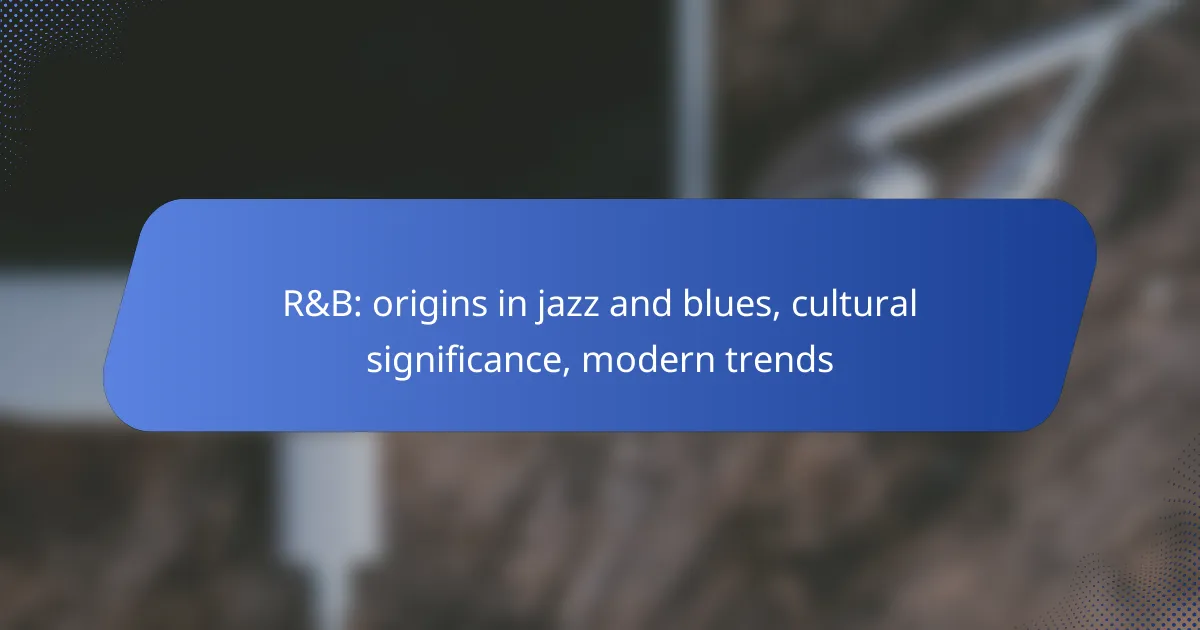Metal music originated in the 1970s as a distinct genre characterized by its heavy sound, aggressive lyrics, and powerful instrumentation. This era saw the evolution of a subculture that embraced powerful guitar riffs, dark lyrical themes, and theatrical elements, setting the stage for a passionate global fan base and the emergence of local scenes, such as in Australia.

How did metal music originate in the 1970s?
Metal music originated in the 1970s as a distinct genre characterized by its heavy sound, aggressive lyrics, and powerful instrumentation. This period marked the transition from earlier rock styles, incorporating elements that would define heavy metal’s identity.
Influence of blues and rock
The roots of metal can be traced back to blues and rock music, which provided the foundational elements for its development. Bands like The Who and Cream blended blues riffs with rock’s energy, setting the stage for heavier sounds.
Key characteristics from blues, such as expressive guitar solos and emotional lyrics, were adopted and intensified in metal music. This fusion created a sound that was both raw and powerful, appealing to a growing youth audience seeking something more intense.
Key bands: Black Sabbath, Led Zeppelin
Black Sabbath is often credited as one of the first heavy metal bands, with their self-titled debut album released in 1970. Their dark themes and heavy guitar work established a template that many bands would follow.
Led Zeppelin also played a crucial role in shaping the genre, blending hard rock with blues and folk influences. Their innovative approach to songwriting and performance helped elevate metal’s status in the music industry.
Emergence of heavy metal sound
The emergence of the heavy metal sound in the 1970s was marked by distorted guitar tones, powerful drumming, and aggressive vocals. This sound was often characterized by its use of minor keys and complex song structures, which set it apart from mainstream rock.
As bands experimented with different styles, sub-genres began to form, including speed metal and doom metal. This evolution showcased the versatility of metal, allowing it to appeal to a diverse audience while maintaining its core identity.
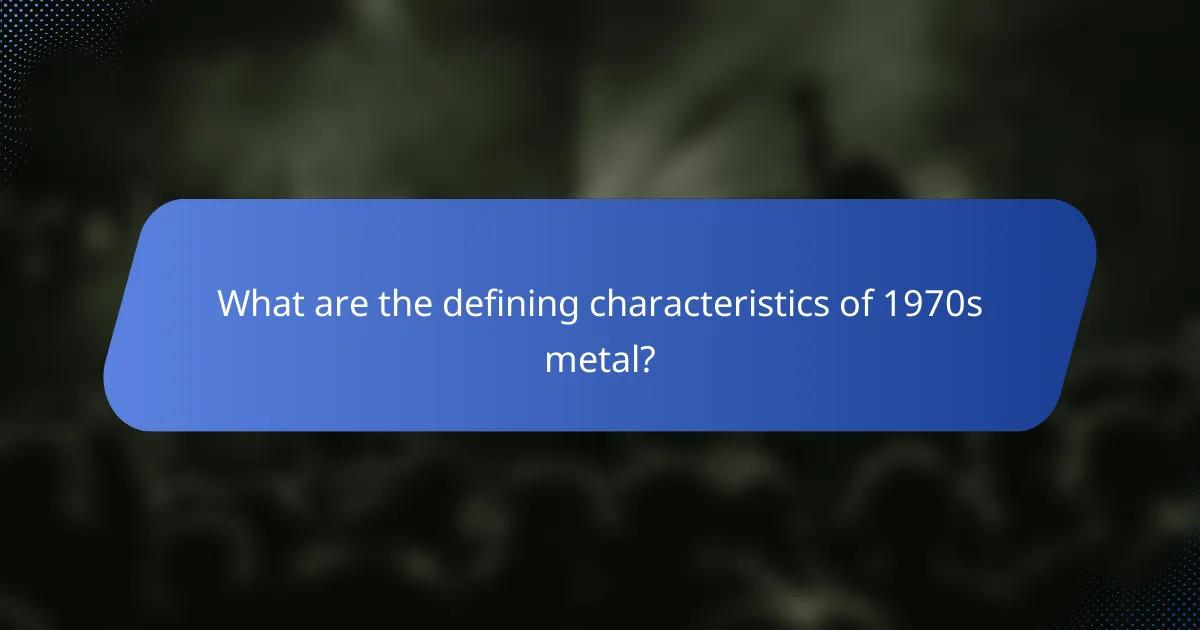
What are the defining characteristics of 1970s metal?
The defining characteristics of 1970s metal include powerful guitar riffs, dark lyrical themes, and distinctive vocal styles. This genre emerged from rock roots and evolved into a subculture that emphasized heavy sound and theatrical elements.
Guitar riffs and solos
Guitar riffs and solos are central to 1970s metal, often featuring distorted sounds and complex structures. Bands like Black Sabbath and Led Zeppelin popularized heavy, down-tuned riffs that became iconic in the genre.
Solos in this era were characterized by technical skill and emotional expression, with guitarists like Eddie Van Halen and Tony Iommi pushing the boundaries of what was possible on the instrument. The use of techniques such as tapping and whammy bar effects became prevalent.
Dark themes and lyrics
Dark themes and lyrics are a hallmark of 1970s metal, often exploring topics like death, war, and the occult. This thematic focus set metal apart from other rock genres, creating a sense of drama and intensity.
Lyrics frequently drew from literature and mythology, with bands like Judas Priest and Iron Maiden incorporating storytelling elements. The use of vivid imagery and provocative language helped to establish a unique identity for the genre.
Distinctive vocal styles
Distinctive vocal styles in 1970s metal varied widely, with many singers employing high-pitched, powerful vocals. Artists like Rob Halford and Bruce Dickinson became known for their impressive range and theatrical delivery.
Vocal techniques often included aggressive shouting and melodic singing, which contributed to the genre’s dramatic flair. This diversity in vocal expression allowed for a wide array of emotional resonance within the music.

How did the metal subculture develop in Australia?
The metal subculture in Australia emerged in the late 1970s, influenced by global metal trends and local music scenes. It became a distinct identity characterized by a passionate fan base, local bands, and a unique cultural expression.
Local bands: AC/DC, Rose Tattoo
AC/DC and Rose Tattoo played pivotal roles in shaping the Australian metal scene. AC/DC, formed in 1973, gained international fame with their hard rock sound, while Rose Tattoo, known for their raw energy, contributed to the pub rock movement that resonated with local audiences.
These bands not only defined the sound of Australian metal but also inspired countless local musicians to form their own groups, fostering a vibrant music community. Their success helped establish a sense of pride and identity among Australian metal fans.
Influence of global metal trends
The Australian metal scene was significantly influenced by global trends, particularly from the UK and the US. Bands like Black Sabbath and Led Zeppelin set the stage for heavier sounds, which Australian musicians adopted and adapted to create a unique blend of styles.
As international acts toured Australia, they brought new ideas and techniques, encouraging local bands to experiment with their music. This exchange helped Australian metal evolve, incorporating elements from punk and hard rock, which further enriched the subculture.
Formation of fan communities
Fan communities were essential to the growth of the metal subculture in Australia. Local venues became gathering spots for enthusiasts, where they could share their passion for music and connect with like-minded individuals. These spaces fostered a sense of belonging and camaraderie among fans.
Additionally, the rise of fanzines and underground publications helped disseminate information about local bands and events, further solidifying the community. Social gatherings, concerts, and festivals became integral to the metal culture, allowing fans to celebrate their shared interests and support local talent.

What role did festivals play in metal’s evolution?
Festivals significantly influenced metal’s evolution by providing a platform for bands to showcase their music and connect with fans. These events helped solidify metal as a distinct genre and fostered a sense of community among enthusiasts.
Major events: Sunbury Music Festival
The Sunbury Music Festival, held in Australia during the early 1970s, was a pivotal event for the metal scene. It featured numerous emerging bands, including iconic acts that would later shape the genre. This festival not only highlighted local talent but also attracted international attention, helping to elevate the status of metal music in the region.
Impact on band exposure
Festivals like Sunbury provided bands with invaluable exposure to larger audiences, which was crucial for their growth. Performing at these events allowed bands to reach fans who might not have encountered their music otherwise. As a result, many bands gained significant followings and opportunities for record deals after their festival performances.
Cultural significance in Australia
The cultural significance of festivals in Australia during the 1970s cannot be overstated. They served as a melting pot for diverse musical styles, uniting fans from various backgrounds under the metal banner. This sense of unity fostered a strong subculture that celebrated individuality and rebellion, which became hallmarks of the metal genre.
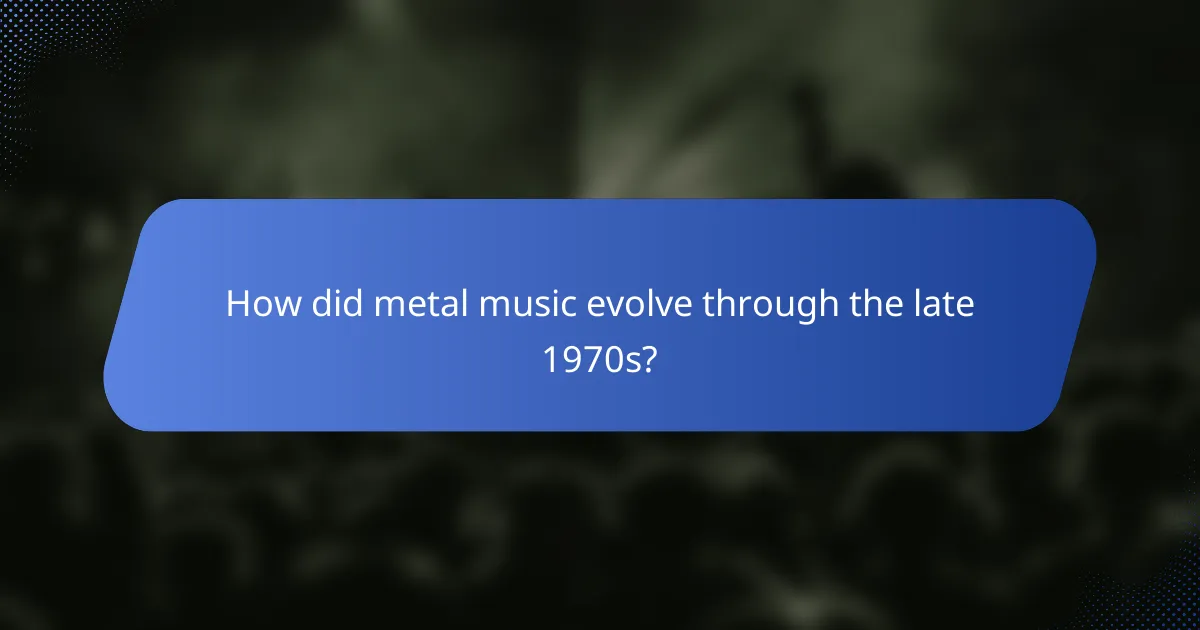
How did metal music evolve through the late 1970s?
Metal music evolved significantly in the late 1970s, influenced by various genres and cultural shifts. This period marked the emergence of new subgenres and a deeper connection with punk rock, which reshaped the sound and attitude of heavy metal.
Introduction of punk influences
Punk rock’s raw energy and rebellious spirit began to infiltrate the metal scene in the late 1970s. Bands like Motörhead incorporated fast tempos and aggressive lyrics, blending punk’s simplicity with metal’s complexity. This fusion created a more dynamic sound that appealed to a younger audience seeking authenticity and intensity.
The influence of punk also encouraged metal musicians to adopt a more DIY ethic, leading to independent labels and underground scenes that fostered creativity and experimentation. This shift helped define a new identity for metal, distancing it from the more polished rock of the past.
Rise of subgenres: thrash, speed metal
The late 1970s saw the birth of subgenres like thrash and speed metal, characterized by faster tempos and heavier riffs. Bands such as Slayer and Metallica emerged, pushing the boundaries of speed and aggression in music. These subgenres laid the groundwork for what would become the dominant sounds of the 1980s.
Thrash metal, in particular, combined elements of punk and traditional heavy metal, creating a sound that was both aggressive and intricate. This evolution attracted a dedicated fan base, leading to the establishment of thrash as a major force in the metal community.
Notable albums and their impact
Several influential albums released in the late 1970s played a crucial role in shaping metal’s trajectory. Black Sabbath’s “Sabotage” and Judas Priest’s “Sad Wings of Destiny” showcased the genre’s potential for complexity and lyrical depth, influencing countless bands that followed.
These albums not only solidified the sound of heavy metal but also expanded its thematic scope, addressing issues like social unrest and personal struggle. The impact of these works can still be felt today, as they continue to inspire new generations of metal musicians and fans alike.






